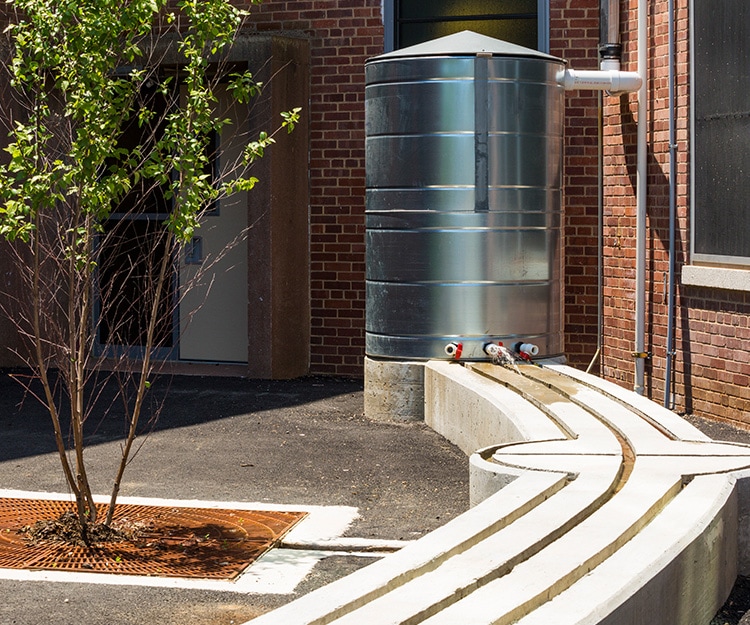Washington DC
Simon Elementary School Playground
Stormwater Management as a Vehicle for Change
status
Completed 2014
client
District of Columbia Department of General Services
expertise
Education
services
Landscape Architecture

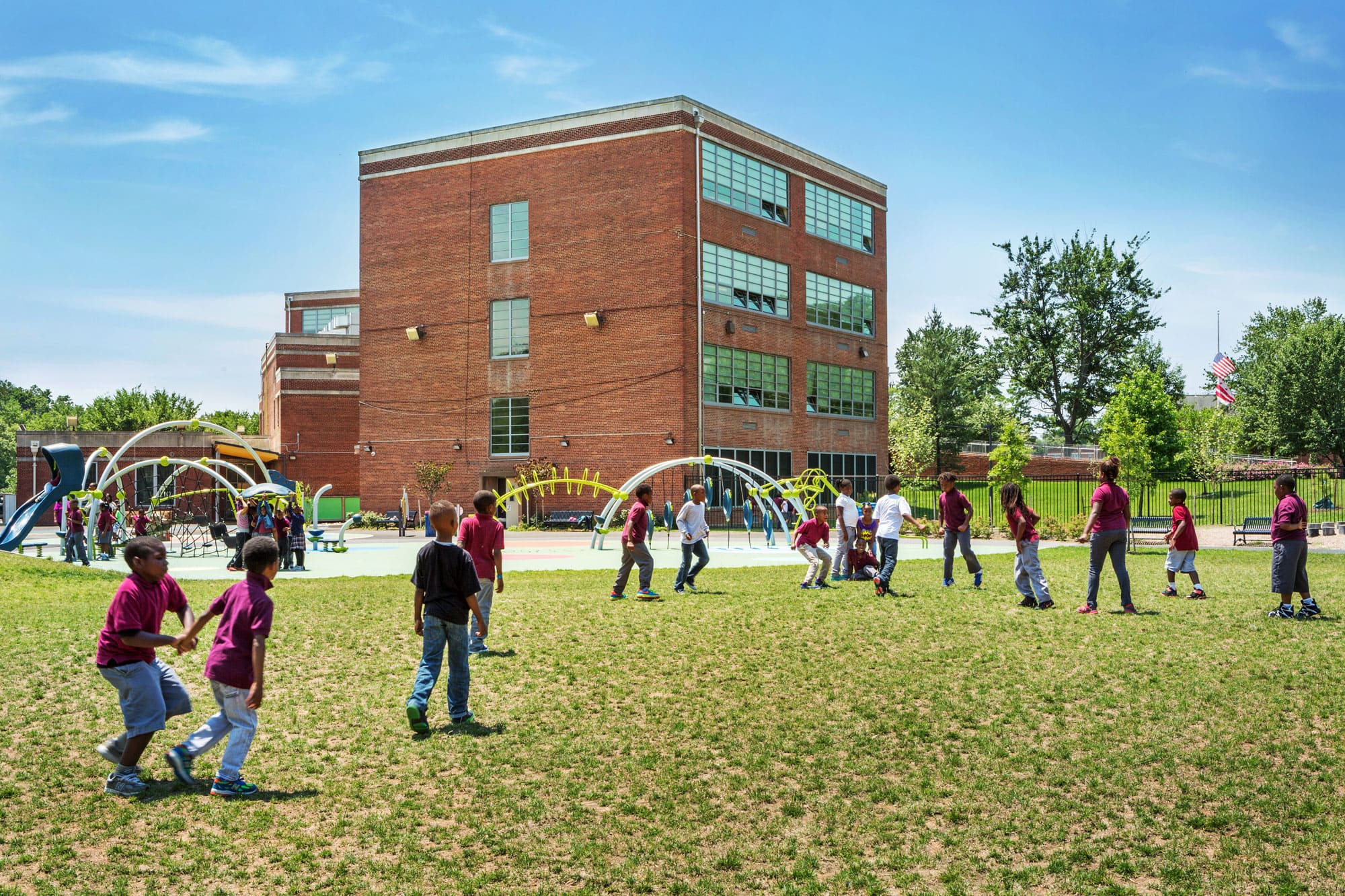
More Than a Stormwater Solution
The new design of this playground carves out a dynamic, absorbent landscape to improve water infiltration and form pockets of passive and active spaces for interaction with nature.
The Potomac River’s Oxon Run tributary suffers pollution largely due to untreated runoff and impervious ground surface. The Simon Elementary School playground, once an uninspiring space located along the banks of Oxon Run, was a prime example of land contributing to rain runoff issues. With mostly asphalt over nearly two acres, it presented an opportunity to demonstrate positive change. LandDesign used landscape architecture to capitalize on stormwater management as a vehicle to create an educational landscape, as well as overcome the challenges faced in watershed rehabilitation. The design consciously redirects roof drainage, guides swales through play space, and increased pervious surface by thirty percent to reduce erosion and decelerate runoff to allow for infiltration.
Born from a watershed rehabilitation initiative, the Simon Elementary School playground was transformed into an inspiring, functional landscape that manages stormwater while forging a direct relationship between children and nature, planting the seed for environmental stewardship.
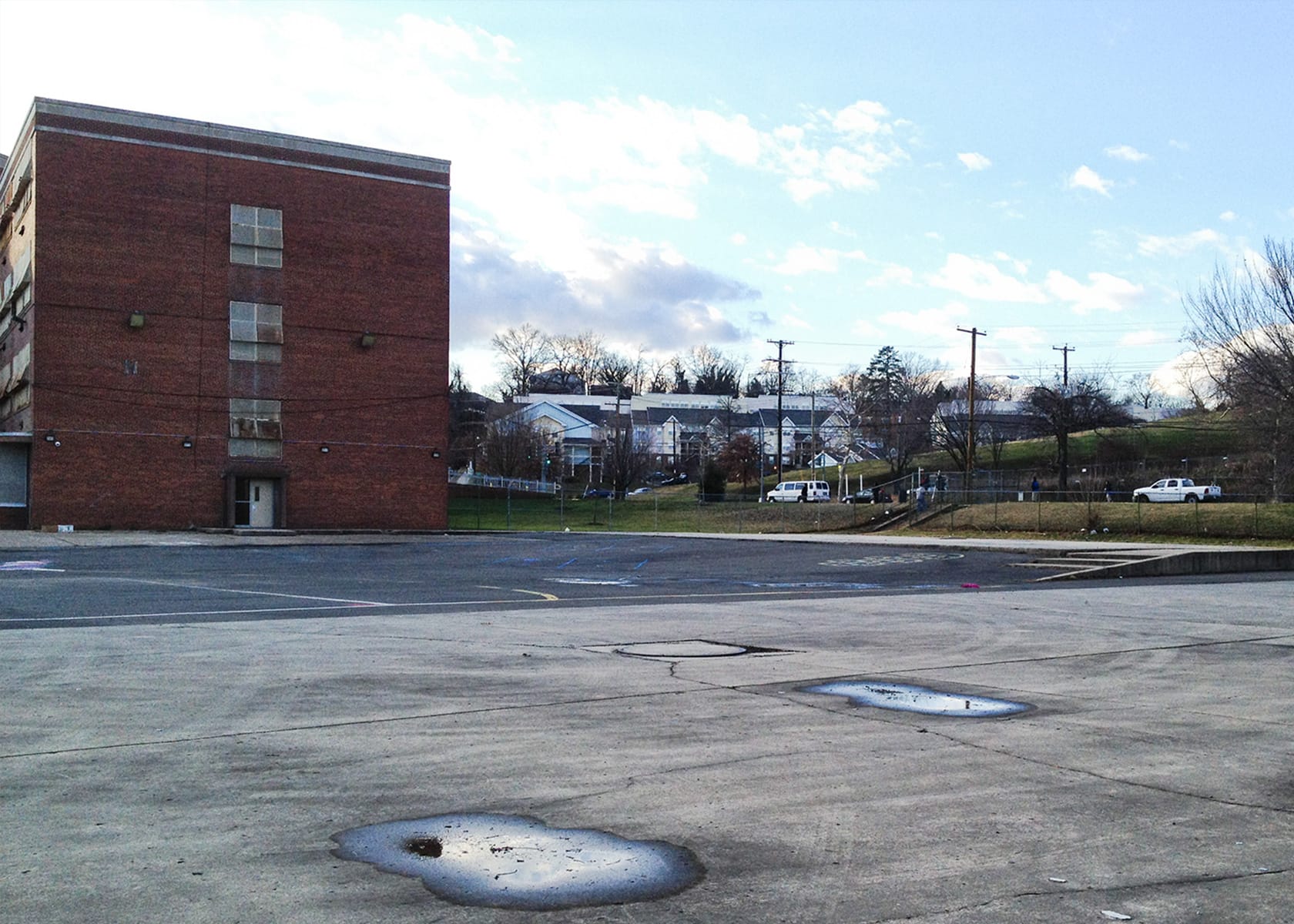
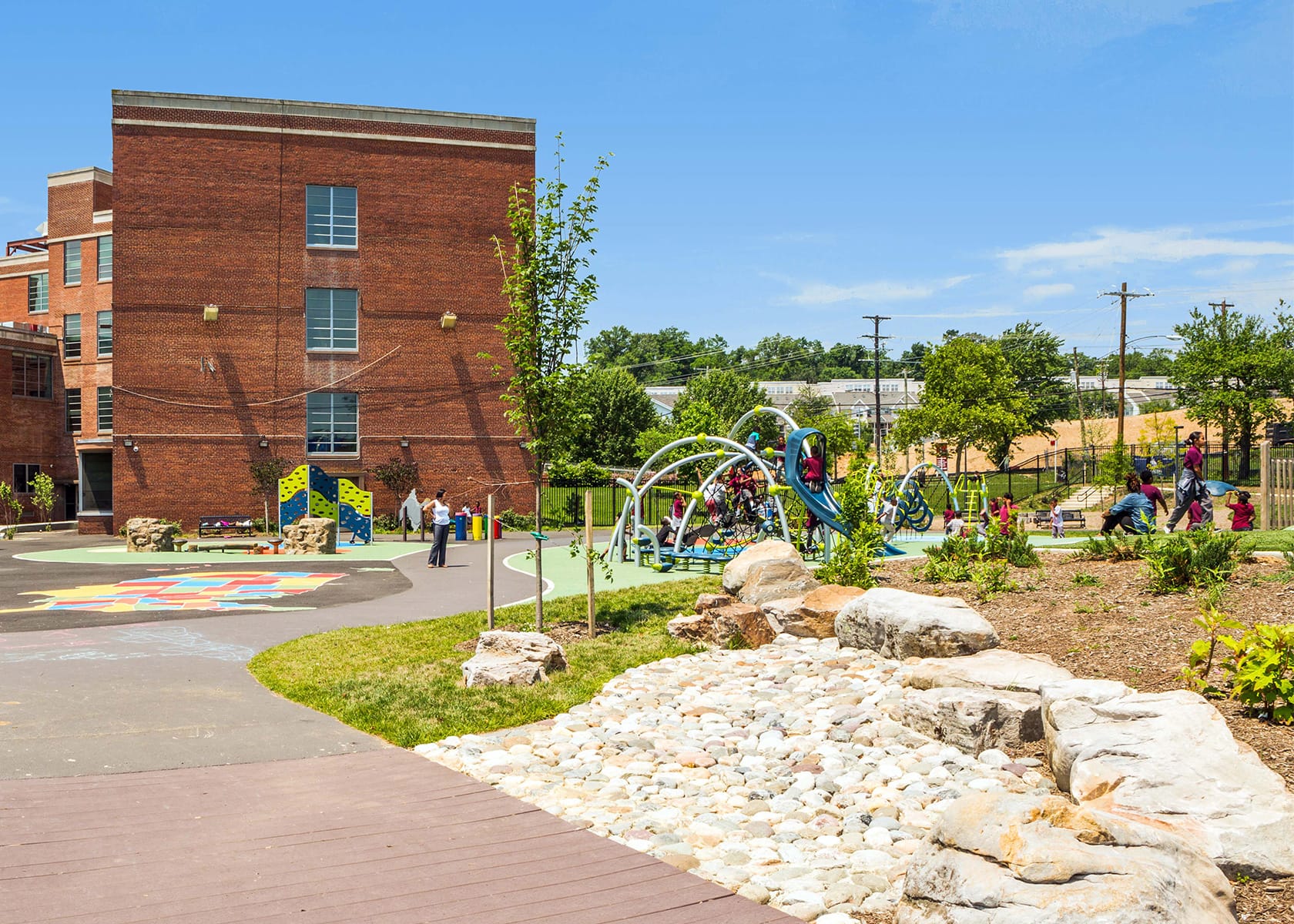
The acres of asphalt at Simon Elementary School was quite literally a blank slate — a vast, uninspiring lot that could barely be called a playground and contributed heavily to watershed pollution in an underserved area of Washington DC. Close collaboration with faculty throughout the design process helped identify key elements to include for outdoor education, physical development, and safety, establishing a juxtaposition between environmental elements and other instructional components.
The transformation of this landscape into an ecological and educational tool, with a focus on environmental stewardship, benefits the Potomac River region and its residents, and immensely improved the play area of the disadvantaged school.

In expectation of stricter stormwater regulations for the Potomac River watershed, LandDesign coordinated closely with municipal and educational partners to develop the Simon Elementary School playground as a pilot project to test integration of these regulations into school grounds. This first attempt set the precedent for future projects under the RiverSmart Schools program that incorporates landscape design principles that emphasize environmental stewardship with the added benefits of an outdoor classroom.

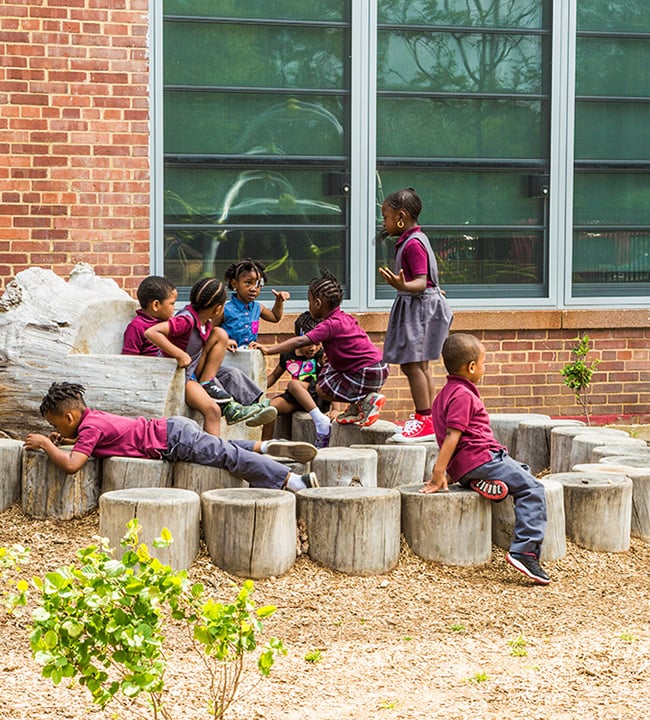

Physical
Take advantage of the existing site’s proximity to the Potomac River watershed, using funding meant for rehabilitation to improve the site environmentally and educationally.
Functional
Increase permeable ground surface to improve water infiltration by adding absorbent, flexible teaching spaces that provide children direct access to nature.
Social
Add valuable child development opportunities to students in a disadvantaged area who might otherwise not have access.

Physical
Take advantage of the existing site’s proximity to the Potomac River watershed, using funding meant for rehabilitation to improve the site environmentally and educationally.

Functional
Increase permeable ground surface to improve water infiltration by adding absorbent, flexible teaching spaces that provide children direct access to nature.

Social
Add valuable child development opportunities to students in a disadvantaged area who might otherwise not have access.
Maximizing Through Multi-Purpose Environments
Large rain gardens span the schoolyard and beyond, improving water management conditions while providing children direct contact to the significance of treating rain runoff properly. Native plants were carefully selected for their water tolerance, one of the many low impact development tools employed to support river improvements.
Designing Flexibility and Multiple Functions into the Playground
This custom element redirects a roof drain into a cistern, where children can use spigots to irrigate nearby trees or send water to the rain garden for infiltration, promoting sustainability and environmental awareness. Inset channels allow the element to act as a dry bench whether water is flowing or not.
